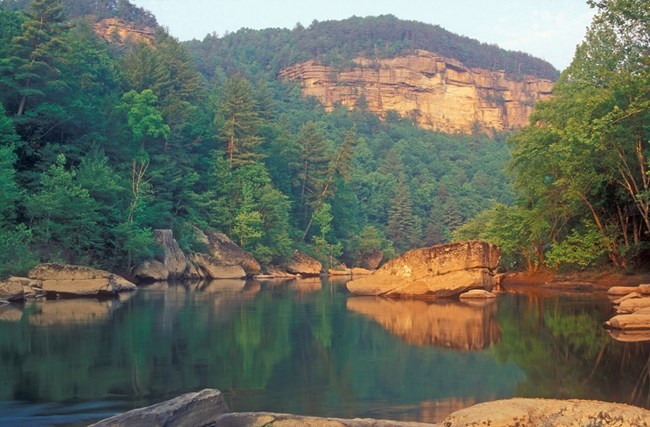
NPS Photo
Overview
The Big South Fork National River and Recreation Area is part of the greater southern Appalachian region, which is widely known as one of the most biologically diverse temperate forest regions in the world. At the heart of this landscape lies the Big South Fork gorge; a forty-mile rift through the northern Cumberland Plateau. This gorge and the processes that helped form it over thousands of years are partly responsible for the area’s unique plant assemblage. Timber harvesting, agriculture, coal mining, oil and gas extraction, fire, grazing, exotic forest diseases, recreational activities, and invasive non-native plants have all shaped or continue to shape the plant communities within Big South Fork area. Big South Fork can be divided into two broad vegetation zones, the area in the gorge and the upland area that surrounds it.The Big South Fork National River and Recreation Area Vegetation Inventory Project delivers many geospatial and vegetation data products, including an in-depth project report discussing methods and results, which include descriptions to vegetation associations, field keys to vegetation associations, map classification, and map-class descriptions. The suite of products also includes a database of vegetation plots, and accuracy assessment (AA) sites; digital images of field sites; digital aerial imagery; digital maps; a contingency table listing AA results; and a geodatabase of vegetation, field sites (vegetation plots, and AA sites), aerial imagery, project boundary, and metadata.
Products
The products of vegetation mapping projects are stored and managed in the National Park Service's Data Store, a repository for documents and publications relating to park resources. From the highlighted items below, click on the type of information you are looking for.
Last updated: October 7, 2024
